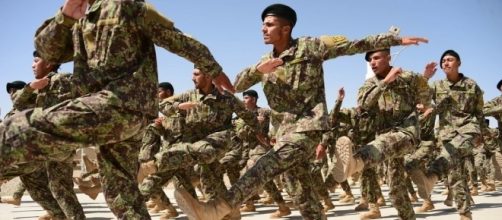A new report from the Special Inspector General for Afghanistan Reconstruction, John Sopko, details how the Pentagon wasted up to $28 million dollars over the past 10 years purchasing uniforms for the Afghan army. Sopko was given the job back on July 2, 2012 by then-President Barack Obama.
How did so much money get wasted on uniforms?
The Pentagon spent $28 million dollars on uniforms for the Afghan army because of their pattern, according to the harsh 17-page report put out by John Sopko. The Defensive Minister of Afghanistan selected the "forest" color for the army's uniforms, which the U.S.
issued to Afghan soldiers.
There are two major problems with this decision, the first of which is the price. The color was privately owned, as opposed to the many free camouflage schemes owned by the U.S. government that could have been chosen instead. On top of this, the uniforms got special tailoring, using zippers instead of buttons, which made the uniforms even more expensive to produce.
The second problem is that the "forest color" is a woodland camouflage that is best suited for use in forests. Forests only make up about 2.1% of the total land area in Afghanistan, meaning that they are only appropriate to use in a small part of the country.
More from the report
John Sopko was obviously not happy about this waste, as he blasted the Pentagon and the Afghan Defense Minister.
He went on a rant, saying that the Pentagon would spend millions of dollars and not ask questions if the Defense Minister had wanted pink or purple uniforms. Sopko also accused the Defense Minister of picking the uniforms because he thought they were pretty and not considering their practicality. This is not that first time that Sopko's office has lambasted the Pentagon for wasting tens of million of dollars from the $66 billion allocated by Congress to equip, house, and train the Afghan army.
According to the report, the Pentagon spent $93 million dollars on uniforms over the last decade.
Sopko noted that if the U.S. switched the camouflage pattern on the uniforms of the Afghan army to something owned by the American military, that they could have saved up to $71 million over the next ten years. In its response to Sopko's report, the Pentagon agreed that there was a need to set up a cost-benefit analysis. This would identify and establish "more effective alternatives," so that, ultimately, money is not wasted.


